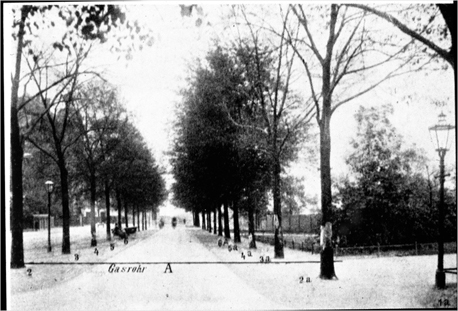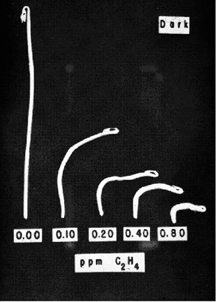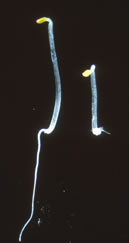


A brief history of ethylene research
• 1901: Dimitry Neljubov, using the “triple response” of pea seedlings, demonstrates that ethylene is the active component of illuminating gas, which had been shown to have profound effects on plants.
• 1910: H.H. Cousins demonstrates that emanations form oranges caused premature ripening of bananas. However, as oranges make relatively little ethylene, it is likely that the ethylene was actually produced by a fungus growing on the oranges.
• 1930s: Gane and co-workers show that ethylene is a natural product of plant metabolism.
• 1960s: Use of gas chromatography for measuring ethylene levels highlights the importance of ethylene in plants.
• 1970s: Ethylene biosynthetic pathway elucidated, primarily by Yang and co-workers.
• 1990s-present. Components of signaling pathway identified.



Left: Illustration of the effect of a leaking illuminating gas main on nearby trees in a small German town in the late 1800s.Center: the triple response in pea. Seedlings were grown in the dark in the presence of increasing concentrations of ethylene. note that the epicotyl is shorter and thicker, and the response to gravity is altered; Right: The tripe response in Arabidopsis. Seedlings were grown in the dark for the three days in the presence (right seedling) or the absence (left seedling) of ethylene.